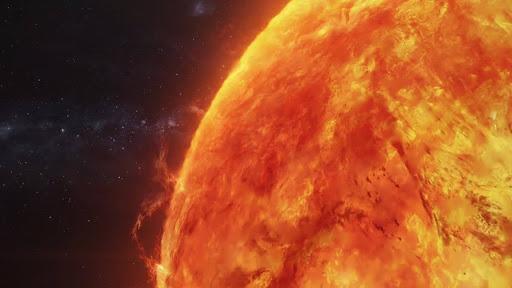
‘Peacock Jets’ on Sun Linked to Magnetic Flux Cancellation
The sun, our star, is a constant source of fascination and mystery. Its dynamic and ever-changing surface is home to mesmerizing displays of solar activity, including spectacular eruptions that can be thousands of kilometers long. These eruptions, known as solar jets, have long been a subject of study for scientists, who are eager to understand the underlying mechanisms that drive them.
Recently, researchers have made a groundbreaking discovery that sheds new light on the origins of these spectacular events. Dubbed “peacock jets,” these recurrent fan-shaped eruptions in the sun’s lower atmosphere have been found to be powered by magnetic flux cancellation, a process where opposing magnetic fields vanish, triggering an energy release.
In this blog post, we’ll delve into the world of solar physics and explore the significance of this discovery, its implications for our understanding of the sun’s dynamics, and why it’s crucial for predicting space weather and safeguarding our technology.
What are Solar Jets?
Solar jets are sudden, explosive releases of energy that burst forth from the sun’s surface. They can be thousands of kilometers long and are characterized by their fan-shaped morphology, with the base of the jet anchored to the sun’s surface and the tip extending into space.
Solar jets are a common feature of the sun’s activity, occurring at a rate of several per day. They are thought to be driven by the buildup of magnetic energy in the sun’s lower atmosphere, which is released when the magnetic field becomes too strong and breaks free.
The Discovery of ‘Peacock Jets’
The discovery of “peacock jets” was made possible by a team of scientists using cutting-edge technology to study the sun’s magnetic field. By analyzing data from the Solar Dynamics Observatory (SDO), a spacecraft launched by NASA in 2010, the researchers were able to identify a specific type of solar jet that exhibited a unique fan-shaped morphology.
The team, led by Dr. S. D. Bhattacharyya of the Indian Institute of Astrophysics, found that these “peacock jets” were powered by magnetic flux cancellation, a process where opposing magnetic fields vanish, triggering an energy release.
Magnetic Flux Cancellation: The Key to Unlocking the Secrets of Solar Jets
Magnetic flux cancellation is a complex process that involves the interaction of two opposing magnetic fields. When these fields meet, they cancel each other out, releasing a vast amount of energy in the process.
This energy release is what powers the “peacock jets,” causing them to erupt from the sun’s surface. The fan-shaped morphology of the jets is thought to be the result of the magnetic field lines snapping back into place, much like the snapping of a rubber band.
Implications for Our Understanding of the Sun’s Dynamics
The discovery of “peacock jets” and the role of magnetic flux cancellation in powering them has significant implications for our understanding of the sun’s dynamics. It provides a deeper understanding of the processes that drive solar activity and the role that magnetic fields play in shaping our star’s behavior.
This knowledge is crucial for predicting space weather, which can have significant impacts on our technology and daily lives. By understanding the underlying mechanisms that drive solar activity, scientists can better forecast and prepare for severe space weather events, such as solar flares and coronal mass ejections.
Conclusion
The discovery of “peacock jets” and the role of magnetic flux cancellation in powering them is a groundbreaking finding that sheds new light on the sun’s dynamics. It provides a deeper understanding of the processes that drive solar activity and has significant implications for predicting space weather and safeguarding our technology.
As scientists continue to study the sun and its fascinating displays of solar activity, we can expect new discoveries and a deeper understanding of our star’s behavior. And with this knowledge, we can better prepare for the challenges and opportunities that the sun’s activity presents.
Source:






